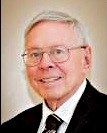It has been a mixed year for international investors. Stock markets in New York, Hong Kong, and, surprisingly, London have all posted healthy gains so far in 2016; however, most of the other major world indexes are in the red. Yet there are actively-managed international mutual funds, like Trimark International Companies Fund,that still manage to post positive performance.
To see how international stocks have lagged, you don’t have to look further than the main non-U.S. global market indices. As of the close of trading on Nov. 18, Tokyo’s Nikkei 225 was off -5.6% year-to-date, the Shanghai Composite had lost -9.8%, the Swiss SMI had shed -10.4%, France’s CAC 40 had dropped -2.9%, and the German DAX was in the hole by -0.7%.
With the exception of the U.S., most Canadians don’t invest directly in these countries. Instead, they hold positions through international mutual funds and ETFs. In most cases, they’ve been losing money recently.
The iShares Core MSCI EAFE IMI Index ETF (TSX: XEF)tracks the performance of more than 1,500 stocks from Europe, Asia, and Australia. It’s still down 0.06 over the 12 months to Oct. 31.
The majority of actively managed international equity mutual funds (defined as those that invest only outside of Canada and the U.S.) aren’t doing a lot better. The average return in this category over the past 12 months is just below break-even at -0.5%.
However, a few funds are bucking the downtrend, and if you want some international diversification in your portfolio, they should be on your radar screen right now. One is the Trimark International Companies Fund, A units.
This fund has been an outstanding performer in its category under the leadership of managers Jeff Feng and Matt Peden. It gained 9.6% over the year ending Oct. 31, almost 10 points better than the category average. The three-year average annual compound rate of return to that point was 13.5% compared to a peer group average of 6.1%. The fund ranks in the first quartile of its category for all periods from one to ten years.
The geographic composition of the portfolio is somewhat unusual, with the U.K. as the top holding at 17.7% (this despite Brexit). China is next at 17.9%, followed by Japan (9.8%).
Top holdings include Samsung Electronics (4.6% of the portfolio), Anheuser-Busch (3.6%), Alibaba Group (3.2%), Kweichow Moutai Co. (3.2%), Experian PLC (3.0%), and Sinopharm Group (2.9%).
The current cash position is 7.3%, so the managers are well positioned to scoop up bargains when they appear.
You might expect a fund with this type of geographic distribution to be higher risk; however, its beta (a measure of risk) is much lower than average. However, like all stock funds, it is vulnerable in down markets. Its worst one-year performance since its launch in 1999 was a decline of 38.2% over the period ending Nov. 30, 2008.
The management expense ratio is high at 2.98%, which may turn off investors who regard such fees as excessive. However, I take the view that fees need to be weighed against results. In this case, I suggest the fund’s strong performance justifies the expense.
Ask your financial advisor if this fund is suitable for your account.
Courtesy Fundata Canada Inc. © 2016.Gordon Pape is one of Canada’s best-known personal finance commentators and investment experts. He is the publisher of The Internet Wealth Builder andThe Income Investor newsletters, available through his BuildingWealth.ca website. This article is not intended as personalized advice.




